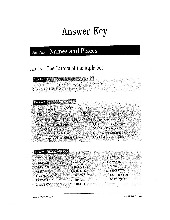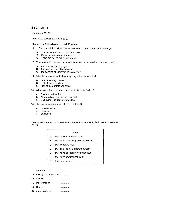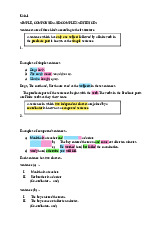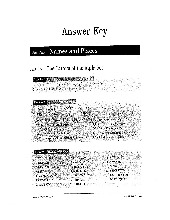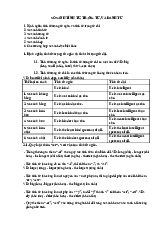



Preview text:
lOMoAR cPSD| 40342981
CHAPTER 4: CULTURAL PATTERNS AND COMMUNICATION: FOUNDATIONS
Defining Cultural Paterns
Components Of Cultural Paterns Beliefs
A belief is an idea that people assume to be true about the world. Beliefs,
therefore, are a set of learned interpretatons that form the basis for cultural
members to decide what is and what is not logical and correct. Values
Values involve what a culture regards as good or bad, right or wrong, fair or unfair,
just or unjust, beautful or ugly, clean or dirty, valuable or worthless, appropriate
or inappropriate, and kind or cruel. Norms
Norms are the socially shared expectatons of appropriate behaviors. Social Practces
Social practces are the predictable behavior paterns that members of a culture typically follow. Two types:
1. Social practce is informal: everyday tasks such as eatng, sleeping, dressing,and working….
2. Social practce is more formal and prescriptve: the rituals, ceremonies, and
structure routnes like salutng the 昀氀 ag, praying in church, honoring the dead at funerals,…
Characteristcs of Cultural Paterns lOMoAR cPSD| 40342981
The Functons Of Cultural Paterns
1. People in all cultures face common human problems for which they must find solutons.
2. The range of alternatve solutons to a culture’s problems is limited.
3. Within a given culture, there will be preferred solutons, which most
peoplewithin the culture will select, but there will also be people who will choose other solutons.
4. Over tme, the preferred solutons shape the culture’s basic assumptons
about beliefs, values, norms, and social practces – the cultural paterns.
Five Problems Or Orientatons That Each Cultural Must Address
1. What is the human orientaton to actvity?
2. What is the relatonship of humans to each other?
3. What is the nature of human beings?
4. What is the relatonship of humans to the natural world?
5. What is the orientaton of humans to tme?
CHAPTER 6: CULTURAL IDENTITY AND CULTURAL BIASES Cultural Identty The
Nature of Identty The Formaton of Cultural Identty Characteristcs of Cultural Identty
1. Cultural identtes are central to a person’s sense of self.
2. Cultural identtes are dynamic.
3. Cultural identtes are also multfaceted
Ex: a person may simultaneously view herself as a student, an employee, a
friend, a woman, a daughter, and more.
Cultural Biases Social Categorizing
Three features in the way all humans process informaton about others are
important to your understanding of intercultural competence.
1. First, people impose a patern on their world by organizing the stmuli. lOMoAR cPSD| 40342981
2. Second, humans assume that other people with whom they interact are
likethemselves. This common human tendency is sometmes called ethnocentrism.
3. Third, humans simplify the processing and organizing of informaton from
the environment by identfying certain characteristcs as belonging to certain
categories of persons and events. This process is called stereotyping. Ethnocentrism
Ethnocentrism is a learned belief in cultural superiority. Stereotyping
The consequence of stereotyping is that the vast degree of di 昀昀 erences that
exists among the members of any one group may not be taken into account in the interpretaton of messages. Prejudice
Prejudice refers to negatve a 琀 tudes toward other people that are based on
faulty and in-昀氀 exible stereotypes. Discriminaton Racism
The word racism itself can evoke very powerful emotonal reactons, especially for
those who have felt the oppression and exploitaton that stems from racist a 琀 tudes and behaviors.
Racism is the form of oppression based on race. People who identfy as Black,
Indigenous and People of Color are targets of racism.
At the individual level, racism is conceptually very similar to prejudice. Individual
racism involves beliefs, a 琀 tudes, and behaviors of a given person toward people
of a di 昀昀 erent racial group.
At the insttutonal level, racism is the exclusion of certain people from equal
partcipaton in the society’s insttutons solely because of their race.
At the cultural level, racism denies the existence of the culture of a partcular
group. Cultural racism also involves the rejecton by one group of the beliefs and lOMoAR cPSD| 40342981
values of an-other, such as the ‘’negatve evaluatons by whites of black cultural values.’’ Form of Racism
